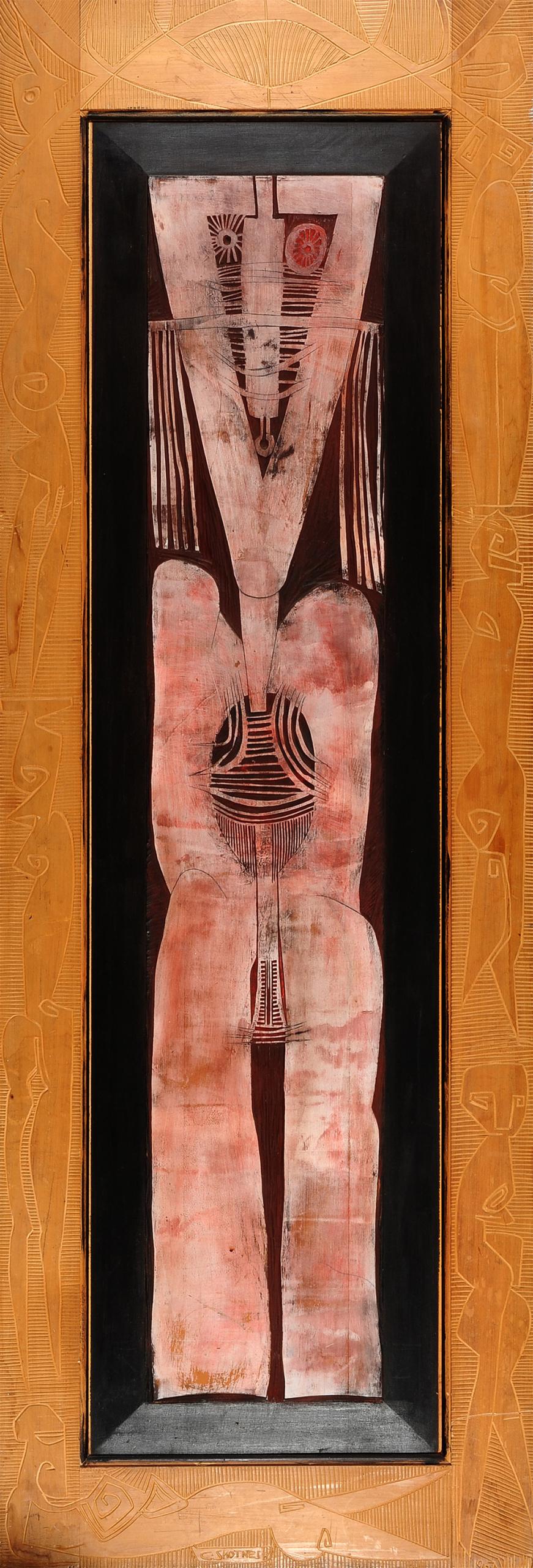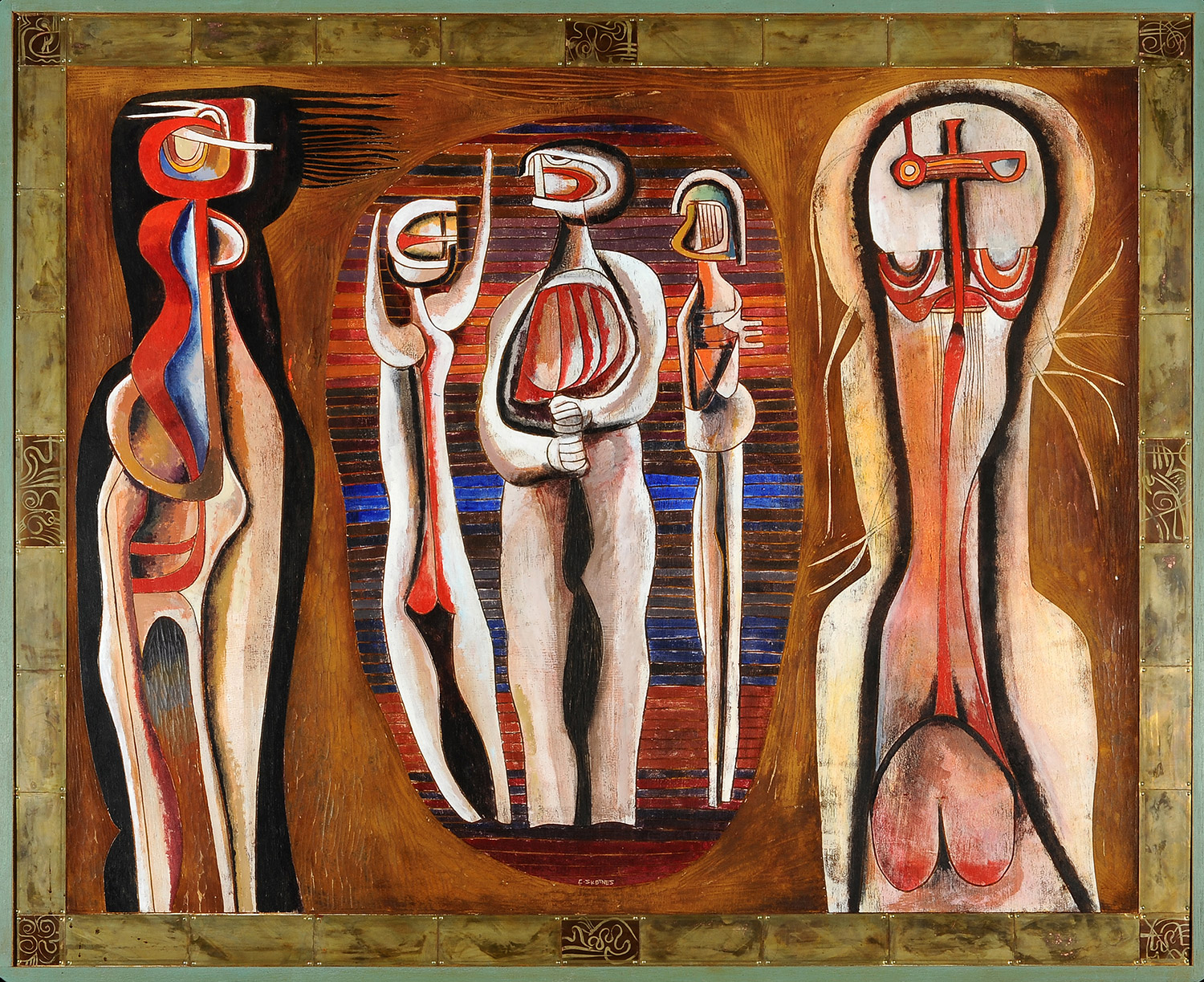Cecil Edwin Frans SKOTNES (1926 – 2009)
BIOGRAPHY
Cecil Skotnes was born in East London in the Eastern Cape, the son of missionaries. He is known especially for his painted and incised wooden panels, striking woodblock prints, public murals, tapestries and sculpture. He pioneered a way of producing art that used earth pigments and indigenous wood to construct visual stories about the African past.
After finishing school, he worked for some months in a draughtsman’s office, leaving this position in 1944 to join the South African forces in Europe. He fought in Egypt and in Italy and, at the end of the war, he spent time in Florence, where he studied drawing.
After returning to Johannesburg, Skotnes studied at the University of the Witwatersrand completing a Bachelor of Fine Arts Degree in 1950. He was a member of the Wits Group, that included Christo Coetzee, Larry Scully and Cecily Sash.
His early use of the medium of woodcutting soon translated into a focus on the block itself. Instead of cutting the block and then using it as a means to an end – the print – he began to colour and shape the blocks, using them as a surface for paint and dry pigment. He also began to work on murals, and carried out many public commissions in this medium.
Among his best known works are The Assassination of Shaka (1973) print portfolio and his 24 large incised panels installed at the 1820 Settlers monument in Grahamstown.
Skotnes was as well known as a teacher and mentor as he was as an artist. He was the cultural officer at the influential Polly Street Art Centre and a founding member of the Amadlozi Group.
In 1979, he moved to Cape Town, where he lived until his death.
His lifelong mission was to nurture talent and encourage creativity, particularly in places where the apartheid government had deliberately excluded this possibility.
His career was a rich and rewarding one from which many benefited – his family, his students, young artists, his friends and those who have bought and bartered his work. His contribution has been recognised by all those who loved him and his art – by universities who conferred honorary degrees on him and by the South African government who awarded him the Order of Ikhamanga (Gold) for his service to South African art.
Skotnes’s artworks also inspired musical compositions by Peter Klatzow: his A Sense of Place for marimba and cello was inspired by two artworks, The Mask and Shaka’s Victory Dance.



